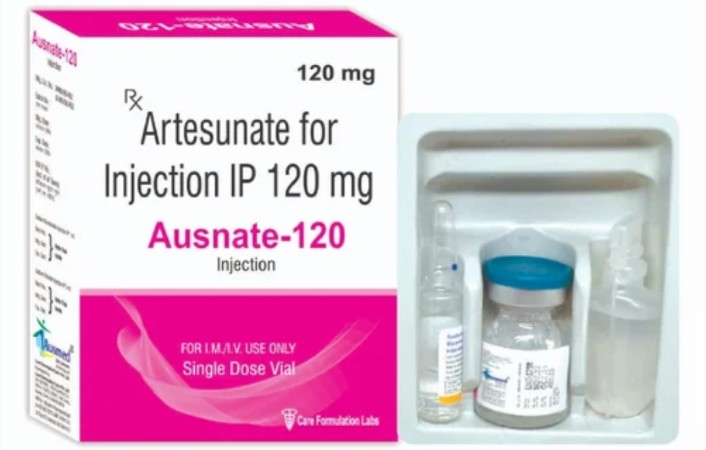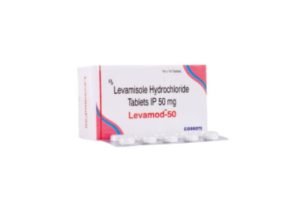

ARTESUNATE MEDICINE
Description
Artesunate is an antimalarial medication derived from artemisinin, which is extracted from the sweet wormwood plant (Artemisia annua). It is primarily used to treat severe malaria caused by Plasmodium falciparum and is often administered intravenously or intramuscularly in hospital settings.
Uses
- Treatment of severe Plasmodium falciparum malaria.
- Treatment of uncomplicated malaria in combination with other antimalarial agents.
- Prophylaxis in endemic areas (under research).
- Potential use in treating other parasitic infections (e.g., schistosomiasis).
- Studies indicate effectiveness in certain viral infections (e.g., dengue fever).
- Research into its anti-cancer properties.
- Investigation of its potential in treating autoimmune diseases.
- Used in combination therapies to reduce resistance in malaria treatment.
Dosage
- Adults:
- Severe malaria: 2.4 mg/kg IV or IM at 0, 12, and 24 hours, then daily for 7 days.
- For uncomplicated malaria: 2–4 mg/kg once daily for 3 days in combination therapy.
- Pediatric:
- Same as adults, based on body weight.
Side Effects
- Nausea and vomiting
- Diarrhea
- Abdominal pain
- Allergic reactions (rash, itching)
- Hepatotoxicity (elevated liver enzymes)
- Hemolysis (in some cases)
- Anemia
- QT prolongation (rarely)
Brand and Company Name, Price (India/US)
- Artesunate Injection (GSK) – $10-$20 (US) / ₹300-₹600 (India)
- Artequick (Nipro) – $8-$15 (US) / ₹250-₹500 (India)
- Artesunate (Mylan) – $7-$12 (US) / ₹200-₹400 (India)
- Artemesin (Natco) – $9-$18 (US) / ₹300-₹700 (India)
- Artemis (Hetero) – $10-$19 (US) / ₹250-₹500 (India)
- AS Mal (Zydus Cadila) – $6-$14 (US) / ₹200-₹450 (India)
- Artekin (MediVenture) – $15-$25 (US) / ₹350-₹800 (India)
- Artelac (Intas Pharmaceuticals) – $8-$17 (US) / ₹300-₹600 (India)
- Artemisinin (Dr. Reddy’s) – $7-$13 (US) / ₹200-₹400 (India)
- Artesun (Cipla) – $12-$22 (US) / ₹300-₹650 (India)
(Note: Prices can vary based on the pharmacy, location, and availability.)
Mechanism of Action
Artesunate exerts its antimalarial effect primarily through the generation of free radicals when it interacts with heme in the malaria parasite’s food vacuole. These free radicals damage parasite membranes and vital proteins, leading to cell death.
Contraindications
- Hypersensitivity to artesunate or other artemisinin derivatives.
- Severe hepatic impairment.
- Pregnancy (unless benefits outweigh risks).
- Known allergy to any component of the formulation.
Drug Interactions
- CYP450 inhibitors/inducers: May alter artesunate metabolism.
- Antimalarial agents: Combination with other agents (e.g., mefloquine) can enhance efficacy.
- Anticoagulants: Potential increased risk of bleeding when used with warfarin.
- QT prolonging drugs: Caution advised due to potential for additive effects.
Precautions ARTESUNATE
- Monitor liver function during treatment.
- Use with caution in patients with a history of cardiac arrhythmias.
- Assess for potential drug interactions.
- Ensure proper hydration, especially in cases of severe malaria.
Patient Counseling Information
- Inform patients about possible side effects and the importance of completing the full course of treatment.
- Advise to report any signs of allergic reactions or unusual symptoms.
- Discuss the importance of follow-up appointments and laboratory tests to monitor efficacy and toxicity.
- Educate on preventive measures against malaria, including the use of mosquito nets and repellents.
Conclusion
Artesunate is a vital medication in the treatment of severe malaria and is part of the first-line therapy in many regions. Its rapid action and efficacy make it essential in clinical settings, though awareness of its side effects and contraindications is crucial for safe administration.
References
- WHO Guidelines for the Treatment of Malaria.
- Drug databases (e.g., Medscape, Drugs.com).
- Clinical studies on artesunate efficacy.
- Manufacturer package inserts.
Example
In a clinical case, a patient with severe malaria was administered artesunate IV, resulting in a rapid decrease in parasitemia and clinical improvement within 48 hours, demonstrating the drug’s effectiveness.
Disclaimer
This information is for educational purposes only and should not replace professional medical advice. Always consult a healthcare provider for diagnosis and treatment options specific to individual needs.
If you need any modifications or additional details, feel free to ask!
Other link –https://www.wikipedia.org/
Artesunate is a semi-synthetic derivative of artemisinin, which is derived from the sweet wormwood plant (Artemisia annua). Here’s a brief overview of its chemical structure:
Chemical Structure:
- Chemical Formula: C₁⁵H₂₁O₅
- Molecular Weight: 338.4 g/mol
Structural Features:
- Core Structure: Artesunate contains a lactone (cyclic ester) structure, which is characteristic of the artemisinin family.
- Functional Groups:
- It has an endoperoxide bridge, which is essential for its antimalarial activity.
- It also features an ester group, which contributes to its pharmacokinetic properties.
Structural Representation:
The structural representation of Artesunate can be illustrated as follows (not visualized here, but typically depicted in chemical drawings):
- The endoperoxide bridge is a key feature that contributes to its mechanism of action against malaria.
- The chemical structure can be visualized in molecular modeling software or chemical databases for a detailed 3D representation.
Importance:
The unique structure of Artesunate is crucial for its effectiveness as an antimalarial agent, particularly against Plasmodium falciparum, the most severe form of malaria.
If you need a detailed structural diagram or specific characteristics, let me know!







